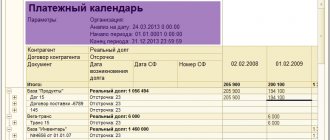How many areas for development should be included in an employee’s individual plan, how to evenly distribute the workload over the year and who to involve to help with implementation, she told the HR-tv.ru portal Elena Kadyrova, General Director of Talent Q.
General recommendations for creating an individual development plan An individual development plan is a document that describes development goals and specific actions to achieve the goals. When compiling it and when determining actions to develop each of the competencies you have chosen, you must adhere to the following recommendations:
Take into account your own individual characteristics of mastering new knowledge and previous learning experience:
- What method and form of training was most suitable for you in the past (independent study of literature, attending lectures, seminars, trainings, participating in discussions, working with a mentor, coach)?
- In what format is it easier for you to perceive information, which channel of information perception is predominant for you?
- In order for the process of perception and assimilation of information to occur more efficiently, it is better to use those methods of presenting information that correspond to your dominant channel of perception:
- Visual - give preference to methods of development in which information is presented in a visual form, try to record all new knowledge in the form of tables and diagrams that will facilitate assimilation. For example, independent study of literature, watching video courses, attending lectures, trainings, observing experts, using a video camera to record your behavior in order to develop further recommendations, etc.
- Auditory - actively use development methods in which information is presented in the form of audio signals. For example, listening to audio books, attending lectures, discussing with experienced performers the characteristics of their behavior, coaching, receiving corrective feedback verbally, analyzing audio recordings of their meetings, negotiations or speeches, etc.
- Kinesthetic - resort to those methods of development that allow you to master new information in the process of performing practical exercises, while interacting with other people. For example, attending trainings, seminars, learning through mentoring and coaching, constant experimentation in order to practice and improve new knowledge and skills, etc.
Individual professional development plan
in accordance with the Regulations on the procedure for the development and approval of an individual professional development plan for a state civil servant of the executive body of government of the Kamchatka Territory (hereinafter referred to as the Regulations), an individual professional development plan is developed by a civil servant in accordance with the official regulations in the form according to Appendix No. 1 to the Regulations, together with immediate supervisor for a period of three years following the end of the current year.
The individual plan specifies:
1) goal (increasing the efficiency and effectiveness of professional work, updating theoretical knowledge by acquiring practical experience, etc.), type, form and duration of additional professional education, including information about the possibility of using distance educational technologies and self-education;
2) areas of additional professional education, determined in accordance with the approximate list of areas of additional professional education of civil servants, approved by order of the Governor of the Kamchatka Territory dated December 19, 2008 No. 870-R;
3) the expected effectiveness of additional professional education of a civil servant.
Additional professional education of civil servants includes the following types:
1) professional retraining;
2) advanced training;
3) internship.
Professional retraining, advanced training and internship of a civil servant are carried out during the entire period of his civil service.
Advanced training of a civil servant is carried out as necessary, determined by the representative of the employer, but at least once every three years.
When a civil servant undergoes professional retraining when calculating the next period of advanced training, it is regarded as advanced training.
Internship for a civil servant is carried out as needed, determined by the employer’s representative.
The grounds for sending a civil servant for advanced training are:
1) expiration of the probationary period or six months after entry into the civil service of a civil servant first hired for a civil service position;
2) the arrival of the next deadline for advanced training;
3) appointment of a civil servant in the order of promotion to a civil service position of another group within the same category of civil service positions on a competitive basis;
4) inclusion of a civil servant in the personnel reserve to fill a civil service position on a competitive basis;
5) the decision of the certification commission on the suitability of a civil servant for the civil service position being filled, subject to his successful completion of the educational program.
The grounds for sending a civil servant for professional retraining are:
1) appointment of a civil servant in the order of promotion to another position in the civil service on a competitive basis in the event of a change in the type of his professional activity;
2) the appointment of a civil servant filling a civil service position in the category “assistants (advisers)”, “specialists” or “supporting specialists”, in order of promotion to a civil service position in the category “managers”;
3) inclusion of a civil servant on a competitive basis into the personnel reserve of a state body to fill a civil service position, the replacement of which will change the type of his professional service activity;
4) the decision of the certification commission on the suitability of a civil servant for the civil service position being filled, subject to his successful completion of the educational program.
10. The grounds for sending a civil servant for an internship are:
1) appointment of a civil servant in the order of promotion to another position in the civil service on a competitive basis;
2) inclusion of a civil servant in the personnel reserve to fill a civil service position on a competitive basis;
3) the decision of the certification commission on the suitability of a civil servant for the civil service position being filled, subject to his successful completion of the educational program.
The expected performance of the implementation of the individual plan may include:
1) increasing the level of professional knowledge in a particular field;
2) in-depth study of a particular issue;
3) ensuring the maintenance of the level of qualifications necessary for the proper performance of official duties;
5) assignment of the next class rank for the position being filled based on the results of passing the qualification exam;
7) successful completion of certification;
 other indicators of the effectiveness of additional professional education.
other indicators of the effectiveness of additional professional education.
The individual plan is agreed upon with the immediate supervisor of the civil servant and approved by the employer's representative.
Form of an individual professional development plan for a state civil servant of the executive body of government of the Kamchatka Territory
Assess the resources you need to implement your development plan
- Time. Analyze which days of the week and what time of day you can allocate to engage in your development, whether you can do this during the working day or whether you will have to transfer most development activities to your free time from your main job. How compatible is this with your schedule and work schedule, your personal life and other plans?
- Material resources. Part of the costs of organizing your development can be covered by your company, but you need to clarify whether the methods and methods of development you have chosen are among those paid for by the company, think about how much personal material resources you can allocate for the purchase of business literature, video courses, payment training, coaching or any other means of development.
Seek help and support from others
Employees of your company:
- Supervisor. You can discuss with your manager what qualities, in his opinion, you need to develop first, jointly formulate development goals, involve him in assessing your actions, receiving feedback and monitoring progress in development.
- Colleagues. You can observe colleagues as they perform their job duties, discuss with them the techniques that allow them to achieve successful results, seek their feedback on your actions, and choose them as mentors.
- Employees of HR departments (personnel management). You can turn to them for help in organizing trainings or other educational programs, consult with them on choosing a mentor, coach, training topic, business literature. You can turn to HR department employees as experts on HR issues, and also involve them as coaches.
- Subordinates. You can ask them for their opinion on the quality of work in your department, ask them for feedback on the HR methods you use, and also use some of your subordinates as experts, mentors on a topic in which you would like to deepen your knowledge.
People not working for your company:
- Coach. The coach’s priority is your development needs; during coaching sessions, he stimulates you to introspection, helps you develop an individual style and approach that allows you to effectively overcome obstacles and difficulties, and achieve goals that are meaningful to you.
- Independent experts. These can be business coaches, experts in their professional field, whose actions you can observe at conferences, exhibitions, whom you can turn to for advice on a specific issue, or engage to provide you with independent and objective feedback on your actions and the results achieved.
- Acquaintances, friends, family members. People who know you well can provide emotional support, help you practice and practice new knowledge in an informal setting, give you feedback on your actions, and advise you in areas in which they have expertise.
What does an individual development plan provide?
Clarity. A clear idea of what you are striving for will let you know whether you are taking the right actions.
Answers to the questions “why?” When your goals and objectives are in front of you, it will be easier for you to understand why you act the way you do. Unnecessary doubts will disappear from your life.
Reference point. If you regularly compare your life path with the path that you have outlined for yourself, you will not get lost and will eventually reach your goals.
How to create a personal development plan? First, determine which areas of your life are most important to you. For example, these are career, money, health, relationships and position in society.
Now make a table from which you can see what and over what period of time you want to achieve in each of these areas (see figure).
In each window, answer the following four questions for yourself::
- What exactly do I want to achieve?
- Why?
- Who can help me with this?
- What actions do I need to take?
An individual development plan is drawn up primarily based on your life goals and priorities. Therefore, your answers to the questions should come down to one thing - who you want to see yourself in the future.
An example of a self-created individual development plan
By completing this table, you will create a very precise, specific, detailed and long-term action plan that will help you, step by step, implement everything you have planned.
IDP - Individual Development Plan is a document that describes development goals and specific actions to achieve the goals. In this article you will see an example of an individual employee development plan.











